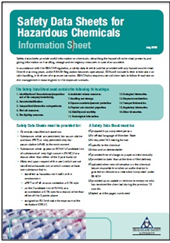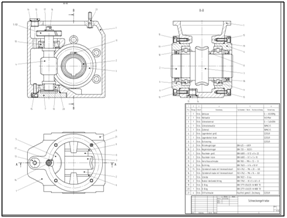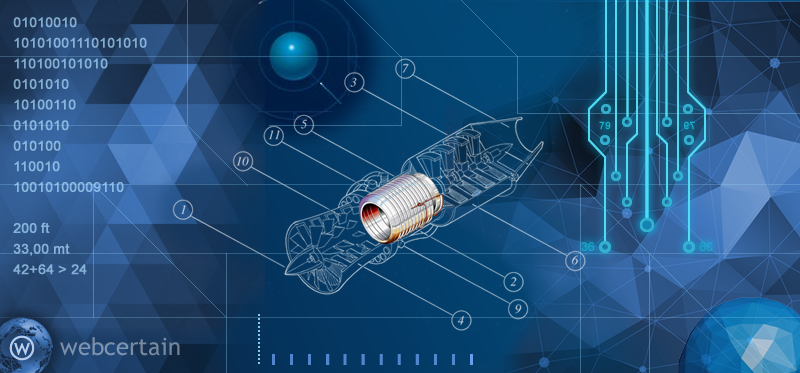Technical translation is a whole world away from the creative translation and transcreation of marketing materials, and applies to a wide variety of sectors including manufacturing, engineering, chemical, and to some extent the specialised needs of medical and pharmaceutical companies. As the title of this post explains, technical translation is not all about manuals; there are actually a lot of different forms of technical translation which fall under this type of service.
 Sure, the technical user manuals that accompany industrial machinery and equipment do require certain special attention due to the industry-specific terminology involved in such jobs, but the same goes for safety data sheets, patents, and even web-based content for companies who sell their goods online. And let’s not forget those pesky technical drawings which also require specialist knowledge to translate accurately and consistency.
Sure, the technical user manuals that accompany industrial machinery and equipment do require certain special attention due to the industry-specific terminology involved in such jobs, but the same goes for safety data sheets, patents, and even web-based content for companies who sell their goods online. And let’s not forget those pesky technical drawings which also require specialist knowledge to translate accurately and consistency.
In order to give you a better understanding of how language service providers might tackle the requirements of a client in the manufacturing industry, let’s take a look at this example of a technical translation project.
Project brief
The client approaches their usual language service provider (LSP), with whom they have worked for a year or so, with two new translation projects. The first is to translate their latest instruction manual for a product to be launched later in the year. The second job is to translate their website to support their growing brand presence overseas. Although they are two completely different projects they both require technical translation.
Specialist translators
Most LSPs will have a database of freelance translators who specialise in different industries. They may have an academic or working background in the same, or similar, industry to the client and it is important that translators and clients are well paired. In the case of this example client, sample translations were provided in order for the client to approve the specific translators who would work on their account. This control meant that the client was able to select the most appropriate translators based on writing style, use of technical terminology and understanding of their business sector. As you can imagine, a translator used to translating marketing content for a travel operator will have completely different knowledge and style than those translators specialising in technical content.
Bilingual glossary
At the beginning of their relationship the client worked with their LSP to create a bilingual glossary of terms which will be used throughout all translation projects moving forward. A bilingual glossary is immensely important when it comes to technical translation as there will always be a high percentage of industry-specific terminology and non-layman’s terms found throughout the content to be translated. What is important is that there is consistency throughout the content being translated moving forward. A detailed glossary, which is well-maintained and updated after every new job, will enable a translator to ensure that the terminology used is accurately used in each and every translated document or file.
Collaboration with your in-country teams
When you begin working with a new LSP, it is important that they get a great understanding of your industry sector and the global workings of your company. Your chosen LSP will probably ask you if you have in-house or in-country native speakers of the languages you require. Why do they do that? Well, it is because they want to make friends with your in-country teams! In all honesty who would blame them? They have not only got a great knowledge of your products or services, as well as the way your business works, but they have also got an excellent command of your target language, especially when it comes to terminology specific to your industry.
For this example client, their in-country teams and technical writers collaborated with the LSP to ensure that the glossary was accurate, and correctly translated into the most suitable terms for their target region, as well as approving the translators to be assigned to their account. As a result of involving the in-country contacts everyone was happy to move forward.
%GC_SERVICE=1460%
Translation memory leverage
As this client had already worked with their LSP on various other translation projects they already benefited from a healthy Translation Memory which had been populated with the previous translated content from all of their other instruction manuals. As this Translation Memory will be used moving forward to analyse any the content sent for translation, the client will most likely benefit from repeat content discounts across both the manual and their website. This leverage is vital, and even though the client has never translated their website before there might be repeated content found in both the Translation Memory and in the web-based content; all in all saving the client money in the long run.
Outcome of project
By making good use of the four stages outlined above this client was confident that their new manual and website would be translated to an extremely high quality with uniform technology used throughout, by a translator that was familiar with their company, reliable and personally approved by their in-country contacts.
Tackling technical drawings and manuals
 When translating technical content there is often some inclusion of technical drawings or images, usually generated by CAD software such as AutoCAD and SmartDraw, in order to translate and written content embedded in these drawings your LSP will most likely ask you to provide the original source files. By providing the source files the written content will be extracted, translated and then reinserted into the original drawing. Alternatively you could ask you LSP to insert a bilingual table below each drawing for easy reference but you should consider both approaches.
When translating technical content there is often some inclusion of technical drawings or images, usually generated by CAD software such as AutoCAD and SmartDraw, in order to translate and written content embedded in these drawings your LSP will most likely ask you to provide the original source files. By providing the source files the written content will be extracted, translated and then reinserted into the original drawing. Alternatively you could ask you LSP to insert a bilingual table below each drawing for easy reference but you should consider both approaches.
The same goes for any Desktop Publishing you might require. If you have created your manual in a program like LaTeX or Adobe FrameMaker, then there may be some typesetting required once the content has been translated. If this is the case then ask your LSP how much they charge for such services as it might make things easier for you in the long run, as you will not have to fiddle about inserting the translated content back into the template yourself. This also applies to the editing of technical drawings. Always double check costing with your LSP and make sure you are getting the most out of their translation workflow.
I hope this post has shown you that technical translation does not just refer to manuals. Yes, they are a large part of the process but really technical translation refers to the content, the terminology and those extra features like technical drawings. It is important that you develop an excellent relationship with your LSP moving forward. Just as your technical writers and engineers spend months writing and reviewing the original version of your technical content, it is important that the same care and attention is applied to your multilingual versions.










One Response
I am just getting to grips with SEO, I was surprised by how it was so in-depth-luckily I
had a few useful blogs to follow
Shared this on my Facebook, very interesting